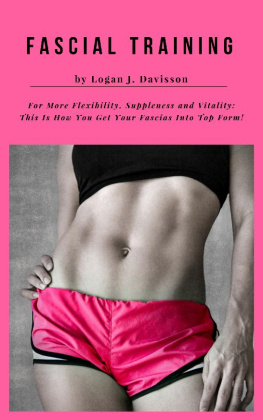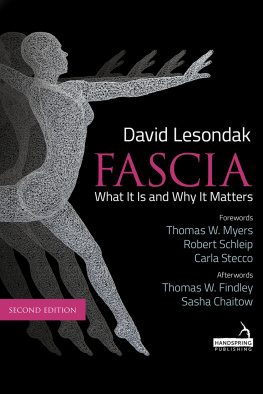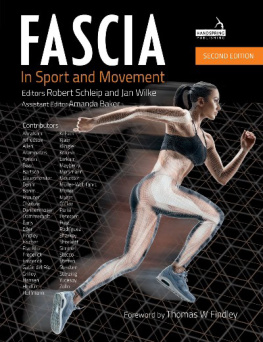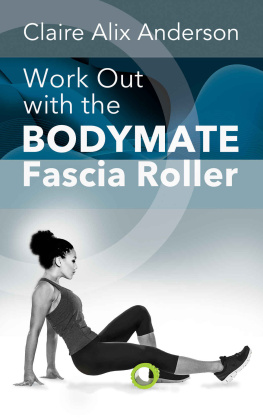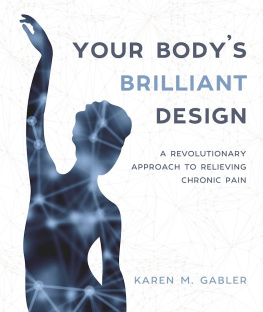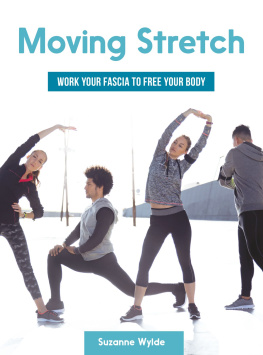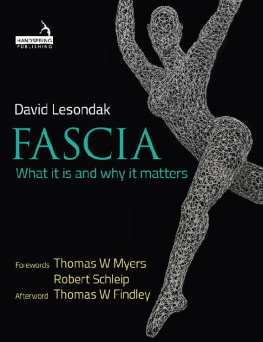Fascial Training For More Flexibility, Suppleness and Vitality:
This Is How You Get Your Fascias Into Top Form!
(10 Minutes Fascia Workout For Home)
Reproduction, translation, further processing or similar actions for commercial purposes as well as resale or other publications are not permitted without the written consent of the author.
Copyright 2018 - Logan J. Davisson
ISBN: 9783748140276
All rights reserved.
Fascia workout for more flexibility, suppleness and vitality - How to get your fascias into top form
Did you know that about 20 kilograms of our body weight is due to fascia? Certainly not, because very few of us will have given much thought to the fascias so far. The fact is, however, that this white mesh connects all components in our body like a mesh. Due to lack of movement, excessive strain, incorrect posture and of course also due to age-related wear and tear, fascia can stick together.
Regular fascia training not only loosens the muscles, but also makes the fascia more flexible, as the exercises contribute to better gliding ability and elasticity.
Fascial training can also be done at home. The only thing you need is a few minutes time, a fascia role and of course a great desire to become more flexible and painless again. Fancy some fascial training? Great, then let's start with the most important information about fascias, so that the exercises can be carried out efficiently later!
What are fascia and what influence do they have on my health
Simply put, fascia are very fine connective tissue skins that surround our muscles. They are not only present in our bodies, but also in the flesh of animals and in the plant world.
You certainly know fascia from the meat preparation, because you have surely had to remove the tough white skin from your raw steak several times.
Fascia is a Latin term that can be translated as bundle or band. Without this tissue our body would not be viable at all, as it is everywhere and not only gives it its shape, but is also responsible for stability.
The fascia not only covers our muscles, but all our organs, bones and nerves. They merge seamlessly like a network and have nerve endings. As a result, they also have a significant influence on the vegetative nervous system.
Fascia also has a significant influence on the lymph, as the light yellow fluid is drained between the fascial connective tissue. Via the lymph, degradation substances are transported to the cells or the degradation products are disposed of. The transport of the fluid is supported by every single movement of the muscles. Our mobility is therefore closely linked to the fascia. However, they can also harden and shorten due to factors such as illness, stress or lack of exercise, as they are transformed in our organism.
The fascia contains most of the nerve cells and receptors that trigger sensory sensations in our brain. This is also the reason why this tissue can be compared to a sensory organ. Fascia provides strength through tensile stress, which is then transmitted through the body. The more elastic or healthy they are, the more power or energy can be transmitted. In principle, they are also responsible for our body shape, as they adapt to the corresponding stresses and thereby change our basic matrix.
The fascias are composed of water, adhesives and collagen fibres, among other things, which ensure elasticity. The tissue is also able to move our organs if necessary, for example during pregnancy. Fascia can in principle be divided into three groups, superficial, deep and visceral fascia.
Superficial fascia
This group is present in the subcutaneous tissue and consists of fatty and loose tissue. They are able to store water and fat, connect tissues and organs and also have an important buffer function.
Deep fascia
This fascia species is present in every single muscle and separates the muscle fibres so that they do not rub against each other. They have most fibres and also enclose joints and bones. The deep fascia includes ligaments, tendons and tendon plates, as well as the joint capsules. Since they contain receptors, they can react to temperature fluctuations or chemical and mechanical stimuli.
Visceral fascia
This category includes the peritoneum, pericardium, meninges and pleura from our lungs. They are responsible for the embedding of the brain and our internal organs, which is why the visceral fascia is double-layered here.
It is assumed that about 20 kilograms of our body weight are "only" fascia. An incredibly high number, considering that most of us didn't know anything about it. The fascia can be trained or manipulated by different methods.
Adhesive and hardened fascia - Cause of many complaints
The fascia can stick together for various reasons. They need enough movement to remain elastic and stable. They stick together in the event of lack of movement, as well as in the event of overloading, as this reduces their gliding ability.
Muscle ache can therefore also be the result of impaired fascia, as overloading causes fine cracks in the tissue, which then trigger inflammation. As already mentioned, not only blood vessels pass through the fascia, but also lymph vessels, as the fluid transports the important nutrients. This is why our lymphatic system is also dependent on exercise.
If the muscles remain tense, there is no longer an adequate supply of nutrients in the painful areas such as the back or neck. Fibrinogen also plays an important role in the fascia. This is a blood clotting factor that accumulates in the tissue when there is a lymph congestion and is transformed into fibrin.
However, fibrin is responsible for wound healing, as it closes our wounds like an adhesive. However, if there are no wounds or injuries in our tissue, the surrounding tissue is stuck together by the fibrin. Adhesive fascia can be the cause of unexplainable pain, which is why this topic is also very important.
The fascial tissue can not only stick together, but also harden. This is the case with a low fluid content, which is common in older people, for example. The loss of fluid shifts the balance of aqueous and fibrous substances.
The fascia of older people is much harder because it is made up of inflexible and strong fibres that become felted together. This, of course, also significantly limits the possibility of movement. The more our fascial tissue hardens, the more painful the movements naturally become.
However, our entire organism is surrounded by fascial tissue like a net. Over time, our brain and all organs can also be affected by hardened and clogged fascia. This leads to a lack of oxygen and blood supply.
So everything is connected by the fascia. This is also the reason why fascial tissue changes significantly in the event of inflammation or injury. In the case of kidney inflammation, for example, the muscles of the lumbar vertebrae can also be affected, since the fascia of the kidneys change their tension when symptoms arise.
This information clearly shows how important the fascia is for our organism. On the positive side, however, the fascial tissue can be trained slowly but surely through targeted training in order to loosen hardenings and existing adhesions.
How does fascial training work
Fascial training uses special exercises to loosen existing adhesions. This allows new collagen to be produced when stimulated correctly, which is of course much more elastic.
The fascia workout is basically composed of stretching and vibrating movements. This also gives our muscles much more resilience.
Most exercises require a foam roll called a fascia roll or a fascia ball. With these tools, targeted pressure can be exerted on the connective tissue, releasing tension and reactivating the affected tissue.
Next page
